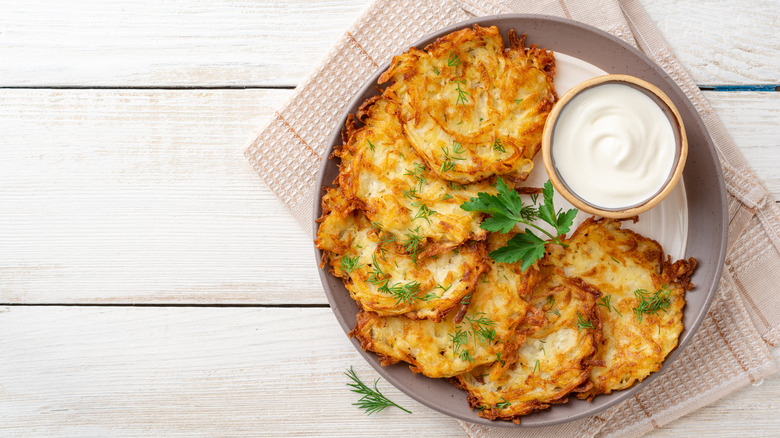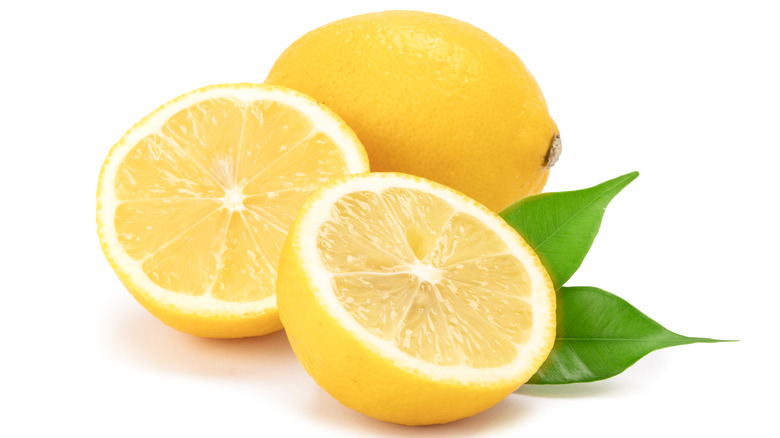How To Get The Best Color For Your Latkes
Some may believe that Jewish cuisine is solely focused on either bagels with cream cheese or the occasional matzah ball soup during Passover. But according to the Torah and the Talmud, there are plenty of kosher (aka "pure foods") that may be consumed, via The World's Kitchen.
There are three main kosher food groups for the Jewish diet: meat, dairy, and pareve, which doesn't contain dairy or meat. Examples of pareve foods include fish, fruit, pasta, and vegetables, as well as coffee and tea, per Kosher Certification. And one of the more well-known ones is crispy potato latkes.
Latkes, according to Kosher Cooking by Chabad, means "pancakes" in Yiddish, and are made with grated potatoes and onions, as well as eggs and flour to bind everything together. These are then fried in oil for five minutes on one side and then two or three minutes on the other side. The result? Beautiful golden-brown potato latkes that are crispy and best served with either sour cream or applesauce.
But sometimes, potatoes change their hue to an unappealing gray or brown color after grating them, as noted by PBS Food. Here's why that happens and how to prevent this mishap to get the best color for your latkes.
Ice water and acidity are key to visually appealing latkes
According to Idaho Potato Commission (IPC), gray potatoes are a result of a process called oxidation. This is when pigments in foods change their hues when exposed to oxygen. To prevent this, take your grated potatoes and add them to a bowl of water that contains a few drops of acidity, as noted by PBS Food. This can be either lemon juice or white wine vinegar.
TheKitchn states that ice water is ideal, which will keep potatoes looking white on the inside and golden-brown when fried on the outside. And since onions are a common ingredient in potato latke recipes, they also help to prevent oxidation from occurring because they "coat the potato cells," as noted by Don Odiorne, VP of Foodservice at Idaho Potato Commission (via IPC).
In terms of what oil to choose for frying, Tori Avey recommends high smoke point oils like peanut or grapeseed. Olive oil burns easily and isn't a good choice for frying, as it may lead to blackened latkes. The source also suggests the small batch method for frying latkes, which basically means don't overcrowd the pan. Keep the numbers down to four or five at a time to keep the oil temperature steady, which will ultimately transform the latke batter into crispy, golden-brown potato pancakes.

